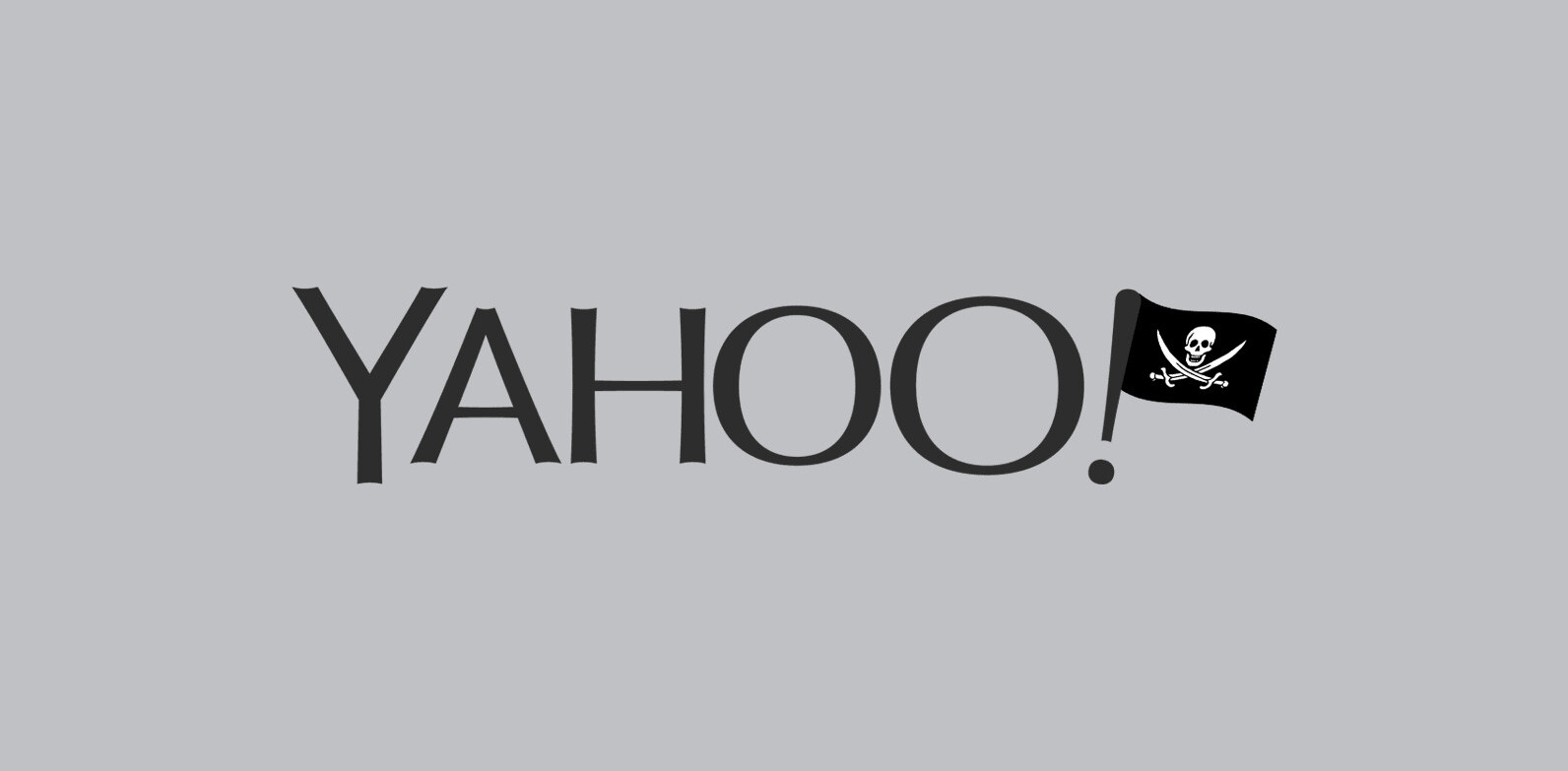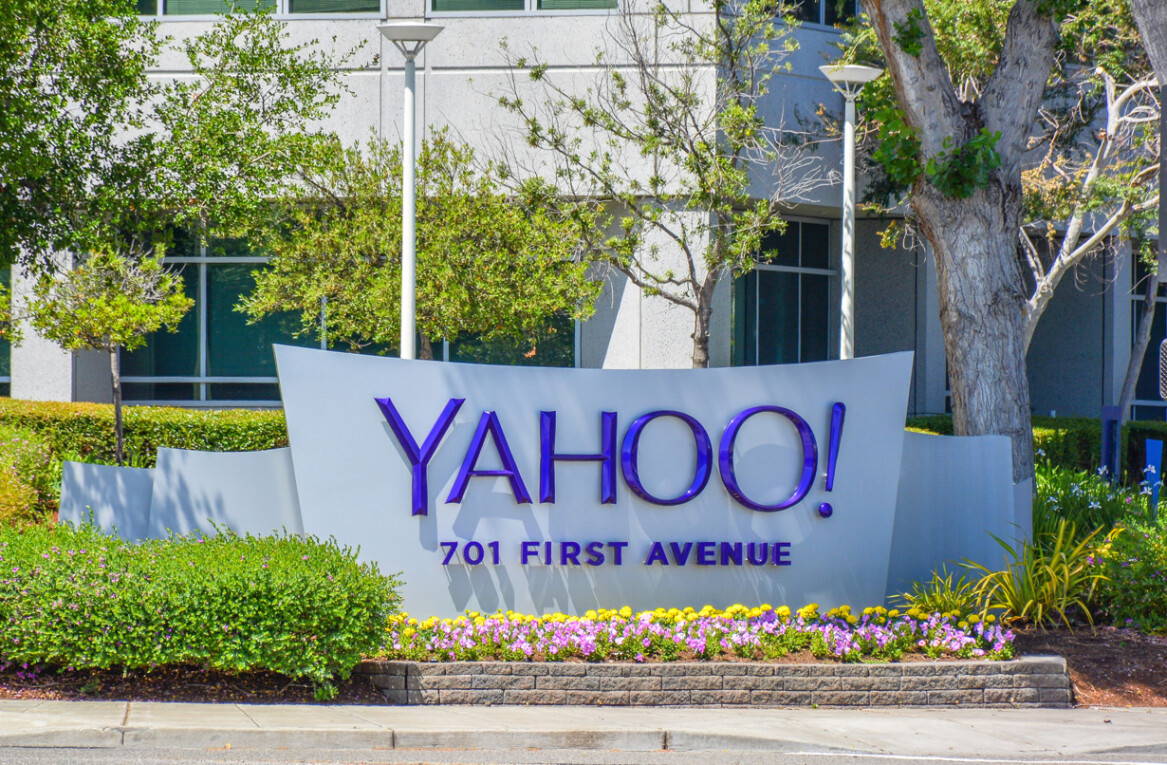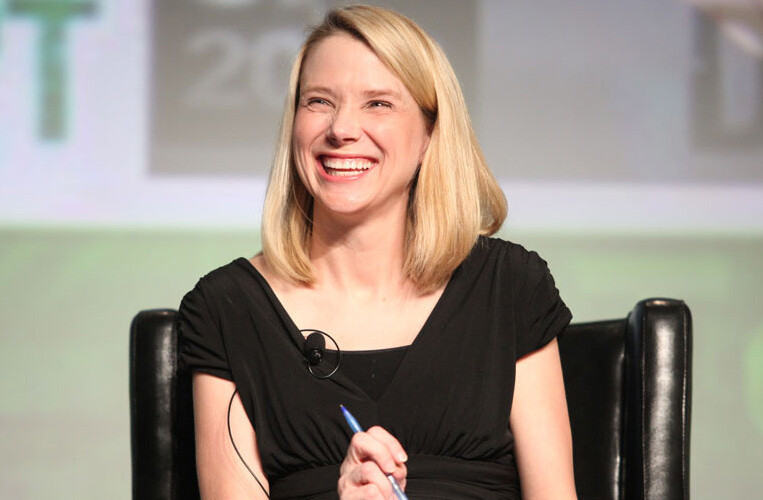
Like it or not, any talk about Flickr — one of the world’s first photography social networks — often seems to generate heat.
Launching in 2004 as the go-to online venue for professional and advanced photographers — practically the only people who owned digital cameras at the time — Flickr joined Yahoo in 2005, where it proceeded to languish in benign neglect for years.
Despite that, a remarkably loyal if sometimes cranky following of photo enthusiasts who “grew up” with Flickr’s galleries and photostreams, decided to stick with the service.
Over time, Flickr slowly augmented and enhanced its offerings with geolocation data and editing capabilities, which alongside its platform-agnostic photo management tools, anchored users even as they explored the competition.
Flickr was alive and dead at the same time.
Then came a new CEO with a fresh eye trained on the service. As Marissa Mayer took over Yahoo’s helm, her focus on Flickr resulted in an overhaul that targeted a much larger community of shooters. Mayer also brought in a high-profile new hire to lead the service into a new era.
Bernardo Hernández González, a soft-spoken tech entrepreneur from Spain and a colleague of Mayer’s from Google, was recruited as vice president of product management and general manager to galvanize Flickr back to its former greatness.
The Next Web sat down with Hernández to chat about Flickr’s past and his vision for the future.
TNW: What does Flickr mean to you?
Hernández: I’ve been here 10 months, and for me it’s the most powerful platform for managing and organizing your pictures with a window to a community of people with passion for photography. That’s what Flickr was 10 years ago when it was first created, and that’s what it is today.
It seems that every six months or so, Flickr makes a big splash with a huge update either for the Web for the mobile apps. Do you have an overall strategy for when and how these updates get launched?
What we need to do is to face the challenges of a rapidly changing world in a platform that hasn’t really changed in 10 years. It means that we have a lot of work to do. It means that uploading your pictures has to be done in a different way. It means that organizing and cleaning your pictures has to be done in a different way. It means consumption of those pictures needs to be done in a different way. We decided that instead of waiting and making the changes at the same time, we are releasing those changes as we have them ready. And we see how the community and the users react to that.
Looking back over the last year, we’ve increased the overall storage capacity to 1TB and that’s been tremendously successful. Uploads have increased between 7 and 10 times [what they were] since we launched, and that’s something new. We’ve also changed our mobile applications to make pictures easier to manage. We want Flickr to be that camera roll in the cloud where you forget about where the pictures are because ultimately Flickr is your repository of images.
What is your strategy for differentiating Flickr from Instagram, DropBox and Google+? How do you plan to compete?
We are not in any way similar to our competition and we do not intend to be. The world doesn’t need another Instagram, another DropBox or another Google+. The world does need an effective platform for managing pictures. The pain point of the users is the thousands of pictures that we produce every year and how hard it is to digest, organize and consume those pictures. The pain point is how do I identify the best ones, share them with the people I care about and expose them to a community with a strong passion for photography. That’s what we’re going to try to do.
The essence of Flickr is the same, and that’s what’s unique about us. No one has done what Flickr did, even today. We want to claim the space that we once created. It’s just that the world has changed a lot and we need to adapt Flickr to the new world.
So are you taking Flickr back to its origins of being the photographer’s go-to place on the Web?
Yes, but with a caveat. We’re all photographers now.
Who’s your target audience, these days?
It’s a mass consumer product, that’s our goal — you eliminate the elitism. A few years ago only a few people could afford a digital camera and those people were the professional and amateur photographer community. Today everyone has a digital camera. Everyone needs to manage thousands of pictures that are being produced every year. That’s also the core success of our competition. We are all becoming photographers.
What about those critical pros, Flickr’s original constituency? Is there something that we can say about Flickr’s approach to the pro and advanced amateur group?
There’s still room for them. We still care very much about them. We’re still very much committed to serve them. They’re the base of our community. They are the cornerstone of the people and dynamics of the passion for photography.
Flickr has a very strong community. Of 10 billion pictures, half of them are public. It’s still the largest photography community in the world. My commitment is to still serve them with the features and products that they need, like good galleries, discussions around the pictures, comments, all of the things that make Flickr a unique place.
Any big ideas about adding things over time?
I think just preserving that and making it faster and better and bringing it to the mobile applications.
What about the iPad, speaking of mobile applications?
It’s coming. In the next few months, you will have Flickr for iPad. It’s not new. We’ve been saying that. When you want to be the camera roll in the cloud, you need to be on every single platform. We would be failing on fulfilling our commitment if we don’t ingest every possible picture from every possible source. So we have to be on the iPad.

How come you’re not already? You guys have had plenty of time.
Not necessarily. When I came on board, even the mobile application we had wasn’t optimized to do what we wanted to do. It’s just a matter of resource allocation. It was more important to update the applications in iOS and Android than it was to develop for the iPad. It’s the choice that we made.
At WWDC, Apple rolled out a new philosophy of imaging and has promised to make iCloud even more accessible, easier to use and cheaper. When you see Apple make a move like that, what goes through your mind?
It’s just the proof that we’re solving the right problem. When I see Apple and Google making these announcements, it’s proof that photography is the biggest content revolution of the Internet that is to come. I equate photography to what email was in the 1990s. The amount of content that we produce through email and then text messages, I think it’s now going to happen with photography. We’re all responding to a very evident need of mining thousands of pictures across multiple devices.
The world of photography is still on Outlook — folders and limited capacity, and we need to move to a good paradigm of webmail, unlimited space, powerful search, dynamic organization, dynamic folders. That’s the analogy I’d like to use.
The beauty of Flickr is that we are platform- and device-agnostic. So when Apple does that, it only happens in the iOS platform. When Google announces something, it’s only for Android. Flickr works with all of them and across multiple devices without asking users to be married to one technology, one operating system and one set of devices. We’re committed to photography and that’s what we’re trying to solve.
Who is Flickr’s stiffest competition now?
It’s a prong with multiple point solutions. Our strongest competition is ourselves.
Oh, you’re good.
[Laughs] No, really. Saying that it’s Instagram — but it’s not Instagram, because look, I use both. They’re super complementary. There are different point solutions, so I’m not going to go into each of those. Our biggest competition is ourselves. The reason Flickr is still around after all these years is that no one really has done what Flickr tries to do. There’s a lot of solutions on the platform side and on the community side and there’s the monetization and licensing, so there’s a lot of point solutions. But none of them truly approach the entire spectrum. If we can actually embrace the legacy of our technology and product challenges, we’ll be able to occupy a space that no one has.
What are the technology challenges, precisely?
Flickr is an old platform that was built in 2004 that needs technology updates. We’re in the process of doing that. It was written in PHP and all the code is in PHP and that means we have to migrate to more stable and secure scalable platforms that are Java-enabled. We are now 100 percent SSL compliant. We had to move the entire infrastructure more than 7,000 servers to the Yahoo infrastructure to make it secure and stable. People don’t see those things, but they need to happen.
We need to take care of those things because you can’t do anything without the proper technology. There’s been so much work on the back end to create a better experience for the user. It’s much faster now. You can view 18 photos in the time it used to take to view one. And it still needs to be deployed across the entire site, but if you go to your page, the increase in performance is remarkable.
Just six months ago the reliability was not good, it used to be down a couple of times a week for 20 minutes or a half hour. We now have a couple of months with 100 percent uptime. Dealing with legacy is always more complicated than starting from scratch.
Did you walk in and say, ‘Oh my God, do I have to fix all of this stuff?’
[Laughs] Were you there? Because that was exactly my reaction.
Can we talk about that some more?
This is why I accepted the job. I’ve been a Flickr user since 2005. I’m an amateur photographer — one of those new photographers — not a professional, but I like shooting with my Android and my iPhone. I take thousands of pictures per year and some of them are good, or I like to think they are good.
Flickr has an unbelievable potential and I was aware of everything that had to be done. I was very happy to hear Yahoo’s and Marissa’s commitment towards Flickr and the platform. We have three acquisitions already since I joined [IQ Engines, LookFlow, and GhostBird] and we invested heavily in these back-end changes in performance, security and reliability, and I think we can deliver on this goal. I recognize all those challenges and it’s thrilling, and I’m very optimistic.

Lets talk about the evolution of the interface both for the Web site and mobile. That’s what people respond to first when they go to the site.
Flickr did not change for 10 years. Let me say that again: Flickr did not change for 10 years. So the changes that we needed to bring to Flickr were insane, from back-end to front-end to product. One of the first things I did was thank the community for their loyalty and their patience while we keep making these changes and we know it’s going to be hard.
We explored the infinite scroll and the justified view and the white over black background and we learned a lot. We have a new photo page. We redesigned that page seven months ago and it was a project that was already ongoing as I joined. It was a very new design, very black with a lot of attention to the picture.

We’re incorporating the feedback on what worked in that design and improving it, and then going back to some of the original designs with more metadata and more space to the community and more space to comment and galleries and albums and groups and mixing white over black with black over white. These iterations are ongoing.
It’s important to understand that we’re on a path, on a journey of continuous change. We pay close attention to what the community says and we have one of the most engaged communities on the Web.

What about the purple bar? Are you going to get rid of that?
We’re part of Yahoo and you can’t have all of the benefits and none of the pain.
So no, you’re not getting rid of the purple bar. There’s my headline: Flickr will not get rid of purple bar, so get over it.
I feel the pain. [Laughs] Before I joined Yahoo — Marissa was in charge for almost a year before I joined — I remember emailing her complaining about the purple bar. It’s not a stupid thing to say. From a design point of view it is confusing and it makes perfect sense what people are asking for. Our commitment is to find a way where we can bring the fact that we belong to a larger family called Yahoo, and that Flickr users need to use a Yahoo ID, so there’s actually reasons why we have that.

So Marissa’s convinced you?
No, what I’m saying is that you need to be mindful of the reasons why. We have to find a way to serve the Yahoo user needs as well as Flickr user needs, and then we’ll explore. Related to this, we need to bring consistency to the design. I like to say that Flickr has this broken design experience, that it’s a Frankenstein of design with the stitches all over it. First we need to find the design language and a design constitution that we can implement across the Website, and then once we do that we’ll talk about the bar.

Well, you’ve got plenty of company. A lot of services are confusing.
It’s true. This is our business and we still find it hard not to deploy a confusing product.
Let’s talk about social networking because Flickr is a huge social network. How important is social networking to Flickr today?
Several things. One, social networks are the backbone of the internet in 2014 so if you do anything on the Web today you have to be social. It’s not a feature, it’s the backbone. Two, Flickr was a proto product — that’s the way I like to define it. It was a social network before social networks; it was photo tagging before before tagging; it was cloud computing before cloud computing; it was community before Web communities. It was many things before they really developed. It was the epitome of Web 2.0 in many ways. It was the source of many of the developments that ended up being strong pillars and cornerstones of the web.
Social networking was one of them, so we just need to embrace what became the natural evolution of those proto features. One of the first changes that I did over the past 10 months is to embrace the standard that had been created on the Web for so long: you’re either a symmetrical social network based on friendship or you’re asymmetrical based on fellowship, and we decided to be asysmmetrical. You can follow people, and that’s what you do today on Flickr.

How do you meet the challenge of Facebook and their muscling into the territory of photographic social networks?
There’s going to be plenty of space for all of us to provide value to the users. There’s so much need. It’s not a pie that we’re trying to slice. It’s not like the auto industry where a three percent market share will make a lot of difference. It’s like the pie is growing by orders of magnitude every year.
So if you remember that photography is the most important content revolution, Facebook has to do something with photography. Facebook will host billions of pictures, but with the goal of tagging people and linking that to your personal social profile so you can keep in touch with the people you know, but it’s not a community of photographers. People at Flickr connect through photography — they don’t even know each other — and that is very different from Facebook. With Facebook you connect to people you know. With Flickr you connect to people whose photography you like. A very different social approach. That’s why Marissa and Yahoo are betting on Flickr.
What is your grand scheme for editing functions? Google+ is encroaching on the Web with more editing functionality. Will Flickr be doing that too?
Already in the mobile apps we have a lot of editing functionality. You will see some very good stuff on the iPad, as the iPad is a natural venue for editing. Post editing is fundamental — not for all your pictures but for the ones that you care about.

Tumblr is in the Yahoo family now, too. How do Flickr and Tumblr interrelate?
Yahoo has two photo publishing platforms — Tumblr and Flickr. They’re unbelievably complementary and Yahoo is very lucky to have both because it offers publishers a very robust and wide spectrum of possibilities that very few other people can offer. Tumblr is about social explosion. Tumblr is about creating these micro blogs that can be shared and re-shared multiple times. The ownership of the content is not that relevant — what is relevant is the virality and the replication of that content. So if you’re a publisher, and you’re looking for virality and the social explosion of your content, Tumblr is the way to go.
Flickr on the other side can’t avoid the social implications, but our core element is the creation of photography. We have extreme respect for the IP (intellectual property) of creation. We host the image, we set the rights of the image — if it’s creative commons, or reserved or private. So if you’re looking for a publishing platform — say you’re NASA or a museum where you want some social virality but you want protection for the IP of the creation — then you choose Flickr.
Is there any kind of in-house interrelationship?
Oh yes, we talk and we work together. We exchange metadata and we’re even talking about how to optimize the back-end consumption of those images. We’re cousins, so it makes sense to keep exploring ways to collaborate.
I’d like to go into the more deeply psychological and philosophical view of what you are creating at Flickr as part of a question on your final thoughts for our readers.
I close my eyes and I see Flickr 18 months down the line, with a beautifully designed, precise, consistent design language addressing the fundamental need of managing effectively the needs of day-to-day photography. That’s my dream. The road is going to be bumpy and it’s not going to be straight and it will not be linear. We will have to iterate both for Web and mobile, but I know where I want to take Flickr. I’m not sure how we’re going to get there. I know where I’m trying to go.
I want Flickr to be the only photography platform that you’ll ever need. We give you space, we give you the tools to manage across multiple platforms and devices and it just works.
➤ Flickr
Get the TNW newsletter
Get the most important tech news in your inbox each week.










